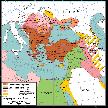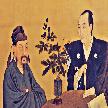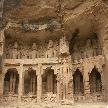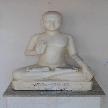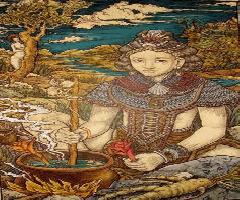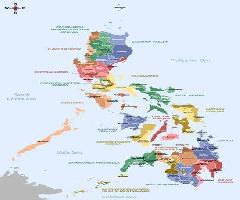

- Category :History
One December 24, 1941, even before Manila was declared as “Open City”, President Manuel Quezon had transferred the Commonwealth Government to Corregidor. He ordered Jose P. Laurel to stay behind in Manila to receive the forces of the Japanese Imperial Army.
Jose P. Laurel do his best to maintain peace despite the cruelty and maltreatment committed by the Japanese Army against the Filipino citizens. He appointed Jorge Vargas to become the Mayor of Manila.
The Japanese Rule
One January 2, 1942 when the entire Manila area fell into the hands of Japan. General Masaharu Homma, the Supreme Commander of the Japanese Imperial Army in the Philippines, had immediately declared their rules and regulations after the invasion. He declare that the Military Government of Japan will be headed by a Director-General. He will observed the whole operation to invade and capture the whole country. General Homma declared the cancellation of the powers of the United States over the entire Philippines.
The Executive Commission
Vargas was ordered to become the head of the Executive Commission.
He was ordered by the Japanese government to select and appoint six Filipinos who will head the different departments that will be created.
The six Filipinos who was appointed were as follows: Benigno Aquino Sr – Interior Commissioner; Antonio delas Alas – Treasury; Jose P. Laurel – Justice; Rafael Alunan – Agriculture; Claro M. recto – Education and Health; and Quintin Paredes – Communication. Each department has its own Japanese advisers. Jose Yulo, the former Speaker of the Philippine Assembly in the Commonwealth become the Chief of Justice of the Supreme Court.
The National Assembly
All of the laws that give importance to democracy and against the totalitarian rule of the Japanese was removed. Even though, the Japanese regime did not abolish the National Assembly under the Commonwealth government, it losses it powers to make and implement laws in the country. The law making and implementation of the laws now belongs to the Military rule of Japan.
The Court of Justice
The Court of Justice was not abolished, but its powers were limited. It now only handles the civil crimes which involves the Filipinos such as traffic violations, murder, or bigamy. The court was also continuously being harassed by the Kempei-tai, the military police of the Japanese Army. All the cases against the Japanese Army, especially if it involves Filipinos as the suspect is being tried in the Military Court of the Japanese Imperial Army.
Cases such as the killing of Japanese soldier, supporting the guerilla movement, and the distribution of any propaganda materials against the Japanese Regime was handled by the Japanese Military Court. The punishment for these crimes were very harsh and inhuman. Any person who are accused of this crimes were tried in an injustice manner. And they captures and punishes all those that are accused of these crimes.
Meanwhile, the Philippine Courts losses its capacity to give equal rights to the accused and the victims. It becomes a puppet to the wants of the Japanese Imperial Army.
The Suspension of the Filipino Freedom
The Japanese Imperial Army implemented a totalitarian government in the entire country. They suspended the Democratic Government established by the Americans. They removed and suspended our freedom and stripped the Filipinos against their rights such as:
- The right to live in a free world and the right for education
- The right to equal trial wherein an accused is presume innocent until proven guilty
- The right for free-press
- The right to conduct a free assembly to air their grievances
- The right to freely travel to any destination
- And the right to choose the leaders of their community
Author’s note: Another compiling story and history of my motherland and its citizens.
Related Articles
Jainism: Understanding The Digambar Tradition
DIGAMBAR TRADITION is one of the two mainstream sects or divisions of JAINISM, the other being SWETAMBAR TRADITION. The basic tenets of Jainism are similarly followed by the two traditions, but there are subtle differences in their beliefs and philosophies.
Religious Priest And Revolutionary Leader Of The Philip
Did you know that a religious leader of indigenous people in our country also became a revolutionary leader during the propagation of Christian Religion in our country during the 16th century? .
Different Regions In The Philippines
As time passes, the Philippines was divided into different regions in order to know the priority and development of each provinces. .

